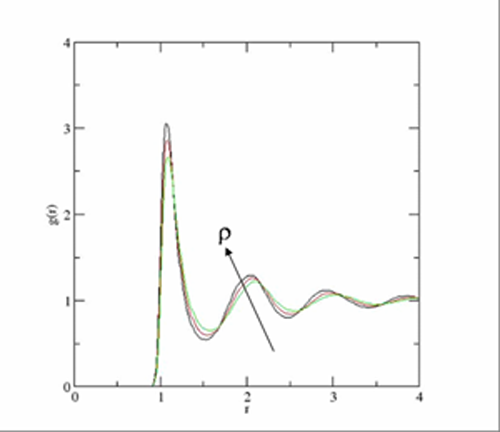The standard uncertainty in the last digit is in (..) and is obtained
from block averages of length 2 to 4 time units. Uncertainties
correspond to 67% confidence limits. An estimate of the self-diffusion
coefficient is based on 10 independent realizations of the mean-square
displacement as a function of time and is of order 1 or 2 in the last
digit. Both the potential and force are truncated (no splines) at the
above indicated value.
Standard long range corrections are included in the tabulated values of energy and
pressure. The usual Lennard-Jones units are used where ε = 1, σ = 1, m
= 1, and t*
2 = (m σ
2 / ε ) define the units of
energy, mass and time, respectively. The reported pressure was
calculated using the virial expression.
